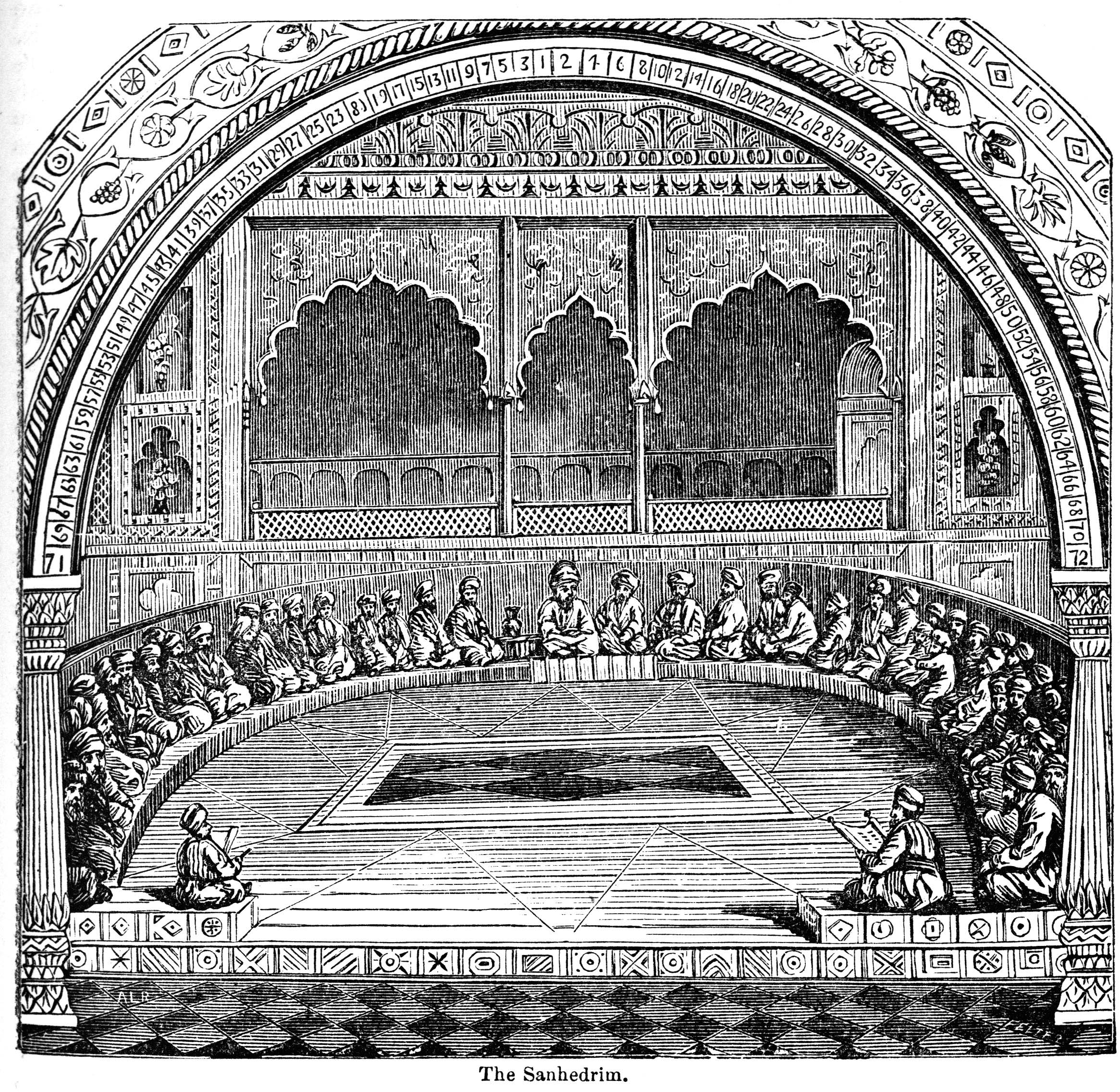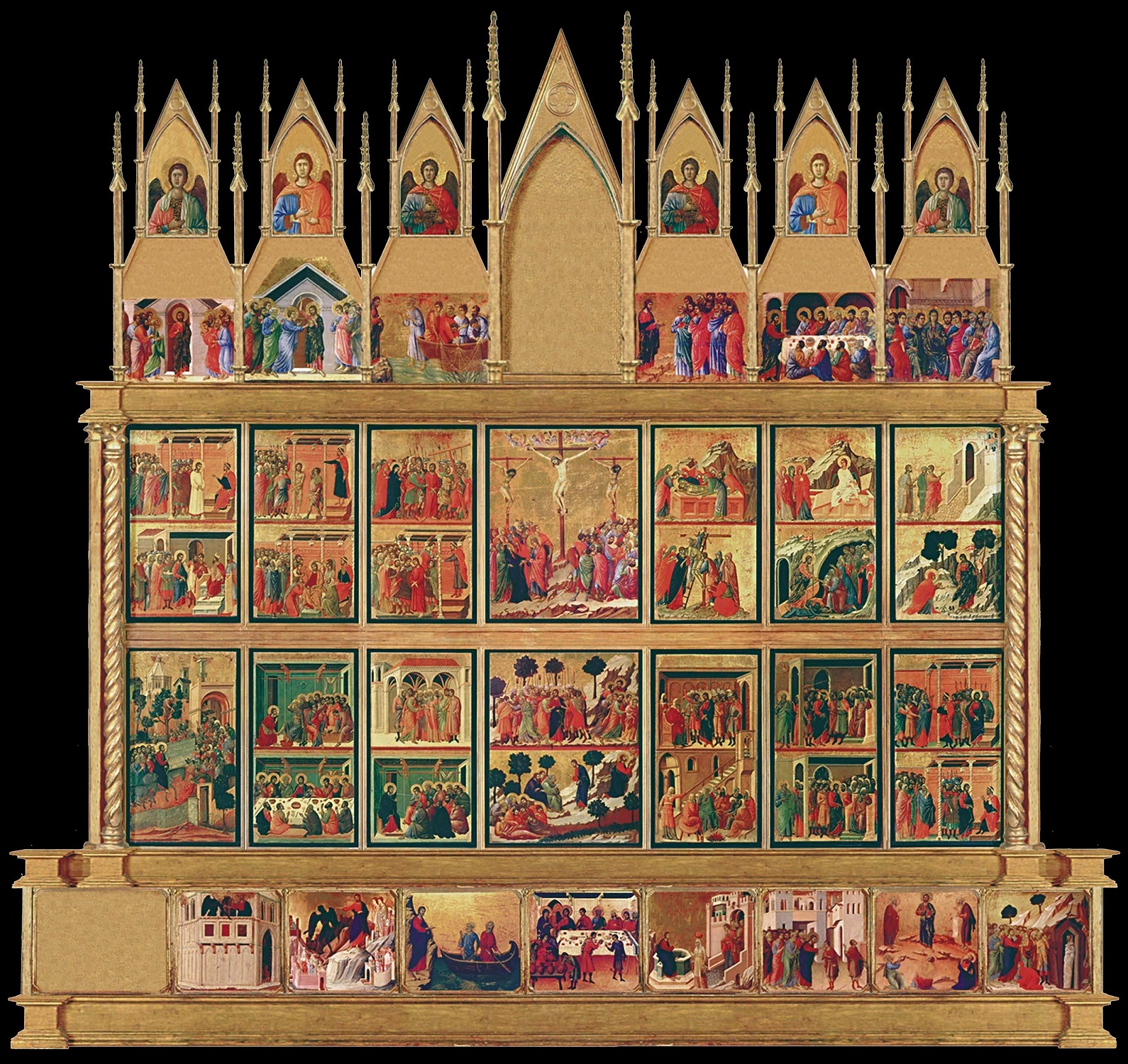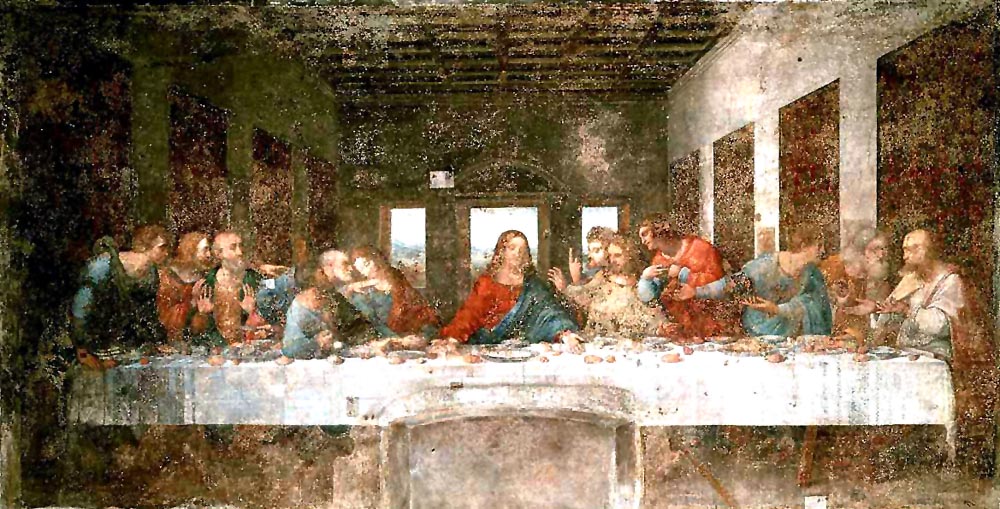|
Jesus Predicts His Betrayal
Jesus predicts his betrayal three times in the New Testament, a narrative which is included in all four Canonical Gospels.Steven L. Cox, Kendell H. Easley, 2007 Harmony of the Gospels' page 182 This prediction takes place during the Last Supper in Matthew 26:24–25, Mark 14:18–21, Luke 22:21–23, and John 13:21–30. Before that, in John 6:70, Jesus warns his disciples that one among them is ''"a devil"''. In the next verse, the author affirms that Jesus is talking about Judas Iscariot. Biblical narrative In the Gospel of John, the prediction is preceded by the assertion in 13:17–18 that Jesus knew that Judas Iscariot would betray him: "If you know these things, blessed are you if you do them. I speak not of you all: I know whom I have chosen: but that the scripture may be fulfilled: He who eats my bread lifted up his heel against me." Craig A. Evans 2005 The Bible Knowledge Background Commentary: John's Gospel, Hebrews-Revelation' page 122 The blessing in John ... [...More Info...] [...Related Items...] OR: [Wikipedia] [Google] [Baidu] |
Sanhedrin
The Sanhedrin (Hebrew and Middle Aramaic , a loanword from , 'assembly,' 'sitting together,' hence ' assembly' or 'council') was a Jewish legislative and judicial assembly of either 23 or 70 elders, existing at both a local and central level in the ancient Land of Israel. There were two classes of Rabbinite courts called sanhedrins: Greater and Lesser. A lesser Sanhedrin of 23 judges was appointed to sit as a tribunal in each city. There was only one Great Sanhedrin of 70 judges, which, among other roles, acted as a supreme court, taking appeals from cases that lesser courts decided. In general usage, ''the Sanhedrin'' without qualifier usually refers to the Great Sanhedrin, which was presided over by the Nasi, who functioned as its head or representing president, and was a member of the court; the Av Beit Din or the chief of the court, who was second to the Nasi and 69 general members. In the Second Temple period, the Great Sanhedrin met in the Temple in Jerusalem, in a bu ... [...More Info...] [...Related Items...] OR: [Wikipedia] [Google] [Baidu] |
Life Of Jesus In The New Testament
The life of Jesus is primarily outlined in the four canonical gospels, which includes his Genealogy of Jesus, genealogy and Nativity of Jesus, nativity, Ministry of Jesus, public ministry, Passion of Jesus, passion, prophecy, Resurrection of Jesus, resurrection and Ascension of Jesus, ascension. Other parts of the New Testament – such as the Pauline epistles which were likely written within 20 to 30 years of each other, and which include references to key episodes in the life of Jesus, such as the Last Supper,''Jesus and the Gospels: An Introduction and Survey'' by Craig L. Blomberg 2009 pp. 441–442''The encyclopedia of Christianity, Volume 4'' by Erwin Fahlbusch, 2005 pp. 52–56''The Bible Knowledge Background Commentary'' by Craig A. Evans 2003 pp. 465–477 and the Acts of the Apostles (s:Bible (American Standard)/Acts#1:1, 1:1–11), which includes more references to the Ascension of Jesus, Ascension episode than the canonical gospels also expound upon the life of Je ... [...More Info...] [...Related Items...] OR: [Wikipedia] [Google] [Baidu] |
Jesus Predicts His Death
There are several references in the Synoptic Gospels (the gospels of Gospel of Matthew, Matthew, Gospel of Mark, Mark and Gospel of Luke, Luke) to Jesus predicting his own death, the first two occasions building up to the final prediction of Crucifixion of Jesus, his crucifixion. Matthew's Gospel adds a prediction, before he and his Disciple (Christianity), disciples enter Jerusalem, that he will be crucified there. Gospel of Mark In the Gospel of Mark, generally agreed to be the earliest Gospel, written around the year 70, Jesus predicts his death three times, recorded in Mark 8#Peter's confession and Jesus' prediction, Mark 8:31-33, mark 9#Predictions about the crucifixion, 9:30-32 and mark 10#Verses 33–34, 10:32-34. Scholars note that this Gospel also contains verses in which Jesus appears to predict his Passion (Christianity), Passion and suggest that these represent the earlier traditions available to the author. Some scholars, such as Walter Schmithals, suggest a redacti ... [...More Info...] [...Related Items...] OR: [Wikipedia] [Google] [Baidu] |
Gospel Harmony
A gospel harmony is an attempt to compile the canonical gospels of the Christian New Testament into a single account. This may take the form either of a single, merged narrative, or a tabular format with one column for each gospel, technically known as a synopsis, although the word ''harmony'' is often used for both. Harmonies are constructed for a variety of purposes: to create a readable and accessible piece of literature for the general public, to establish a scholarly chronology of events in the life of Jesus as depicted in the canonical gospels, or to better understand how the accounts relate to each other. Among academics, the construction of harmonies has been favoured by conservative scholars, though one scholar, B. S. Childs, opposes this. Students of higher criticism see the divergences between the gospel accounts as reflecting the construction of traditions by the early Christian communities. Among modern academics, attempts to construct a single story have largely ... [...More Info...] [...Related Items...] OR: [Wikipedia] [Google] [Baidu] |
Bargain Of Judas
The Bargain of Judas is a biblical episode related to the life of Jesus which is recorded in all three Synoptic Gospels, , and . It relates how Judas Iscariot made a bargain with the Jewish chief priests to betray Jesus. Biblical accounts The Gospel of Matthew specifies that Judas received thirty pieces of silver: Then one of the Twelve — the one called Judas Iscariot — went to the chief priests and asked, "What are you willing to give me if I hand him over to you?" So they counted out for him thirty silver coins. From then on Judas watched for an opportunity to hand him over. The Gospel of Mark and the Gospel of Luke mention no price. Luke's Gospel states that Satan entered Judas to prompt him for the bargain: Now the Feast of Unleavened Bread, called the Passover, was approaching, and the chief priests and the teachers of the law were looking for some way to get rid of Jesus, for they were afraid of the people. Then Satan entered Judas, called Iscariot, one of th ... [...More Info...] [...Related Items...] OR: [Wikipedia] [Google] [Baidu] |
Helen Gardner (art Historian)
Helen Gardner (1878–1946) was an American art historian and educator. Her '' Art Through the Ages'' remains a standard text for American art history classes. Biography Gardner was born in Manchester, New Hampshire and attended school in the Hyde Park neighborhood of Chicago. In 1901 she graduated with a degree in classics from the University of Chicago. After an interval as a teacher, she returned to the same university to study art history, and received a master's degree in 1918. In 1920 she began lecturing at the School of the Art Institute of Chicago, where she would spend the rest of her career, with the exception of short appointments at UCLA The University of California, Los Angeles (UCLA) is a public land-grant research university in Los Angeles, California, United States. Its academic roots were established in 1881 as a normal school then known as the southern branch of the C ... and the University of Chicago. In 1919, she became the head of the photogr ... [...More Info...] [...Related Items...] OR: [Wikipedia] [Google] [Baidu] |
The Last Supper (Leonardo)
''The Last Supper'' ( or ) is a mural painting by the Italian High Renaissance artist Leonardo da Vinci, dated to , housed in the refectory of the Convent of Santa Maria delle Grazie, Milan, Santa Maria delle Grazie in Milan, Italy. The painting represents the scene of the Last Supper of Jesus with the Apostles in the New Testament, Twelve Apostles, as it is told in the Gospel of Johnspecifically the moment after Jesus predicts his betrayal, Jesus announces that one of his apostles will betray him. Its handling of space, mastery of perspective, treatment of motion and complex display of human emotion has made it one of the Western world's most recognizable paintings and among Leonardo's most celebrated works. Some commentators consider it pivotal in inaugurating the transition into what is now termed the High Renaissance. The work was commissioned as part of a plan of renovations to the church and its convent buildings by Leonardo's patron Ludovico Sforza, list of dukes of Mil ... [...More Info...] [...Related Items...] OR: [Wikipedia] [Google] [Baidu] |
Leonardo Da Vinci
Leonardo di ser Piero da Vinci (15 April 1452 - 2 May 1519) was an Italian polymath of the High Renaissance who was active as a painter, draughtsman, engineer, scientist, theorist, sculptor, and architect. While his fame initially rested on his achievements as a painter, he has also become known for #Journals and notes, his notebooks, in which he made drawings and notes on a variety of subjects, including anatomy, astronomy, botany, cartography, painting, and palaeontology. Leonardo is widely regarded to have been a genius who epitomised the Renaissance humanism, Renaissance humanist ideal, and his List of works by Leonardo da Vinci, collective works comprise a contribution to later generations of artists matched only by that of his younger contemporary Michelangelo. Born out of wedlock to a successful notary and a lower-class woman in, or near, Vinci, Tuscany, Vinci, he was educated in Florence by the Italian painter and sculptor Andrea del Verrocchio. He began his career ... [...More Info...] [...Related Items...] OR: [Wikipedia] [Google] [Baidu] |
Italian Renaissance
The Italian Renaissance ( ) was a period in History of Italy, Italian history between the 14th and 16th centuries. The period is known for the initial development of the broader Renaissance culture that spread across Western Europe and marked the transition from the Middle Ages to modernity. Proponents of a "long Renaissance" argue that it started around the year 1300 and lasted until about 1600. In some fields, a Italian Renaissance painting#Proto-Renaissance painting, Proto-Renaissance, beginning around 1250, is typically accepted. The French word (corresponding to in Italian) means 'rebirth', and defines the period as one of cultural revival and renewed interest in classical antiquity after the centuries during what Renaissance humanism, Renaissance humanists labelled as the Dark Ages (historiography), "Dark Ages". The Italian Renaissance historian Giorgio Vasari used the term ('rebirth') in his ''Lives of the Most Excellent Painters, Sculptors, and Architects'' in 1550, bu ... [...More Info...] [...Related Items...] OR: [Wikipedia] [Google] [Baidu] |
The Last Supper - Leonardo Da Vinci - High Resolution 32x16
''The'' is a grammatical Article (grammar), article in English language, English, denoting nouns that are already or about to be mentioned, under discussion, implied or otherwise presumed familiar to listeners, readers, or speakers. It is the definite article in English. ''The'' is the Most common words in English, most frequently used word in the English language; studies and analyses of texts have found it to account for seven percent of all printed English-language words. It is derived from gendered articles in Old English which combined in Middle English and now has a single form used with nouns of any gender. The word can be used with both singular and plural nouns, and with a noun that starts with any letter. This is different from many other languages, which have different forms of the definite article for different genders or numbers. Pronunciation In most dialects, "the" is pronounced as (with the voiced dental fricative followed by a schwa) when followed by a con ... [...More Info...] [...Related Items...] OR: [Wikipedia] [Google] [Baidu] |
Kiss Of Judas
The kiss of Judas, also known as the Betrayal of Christ, is the act with which Judas identified Jesus to the multitude with swords and clubs who had come from the chief priests and elders of the people to arrest him, according to the Synoptic Gospels. The kiss is given by Judas in the Garden of Gethsemane after the Last Supper and leads directly to the arrest of Jesus by the police force of the Sanhedrin. Within the life of Jesus in the New Testament, the events of his identification to hostile forces and subsequent execution are directly foreshadowed both when Jesus predicts his betrayal and Jesus predicts his death. More broadly, a ''Judas kiss'' may refer to "an act appearing to be an act of friendship, which is in fact harmful to the recipient." In Christianity, the betrayal of Jesus is mourned on Spy Wednesday (Holy Wednesday) of Holy Week. In the New Testament Judas was both a disciple of Jesus and one of the original twelve Apostles. Most Apostles originated fro ... [...More Info...] [...Related Items...] OR: [Wikipedia] [Google] [Baidu] |









